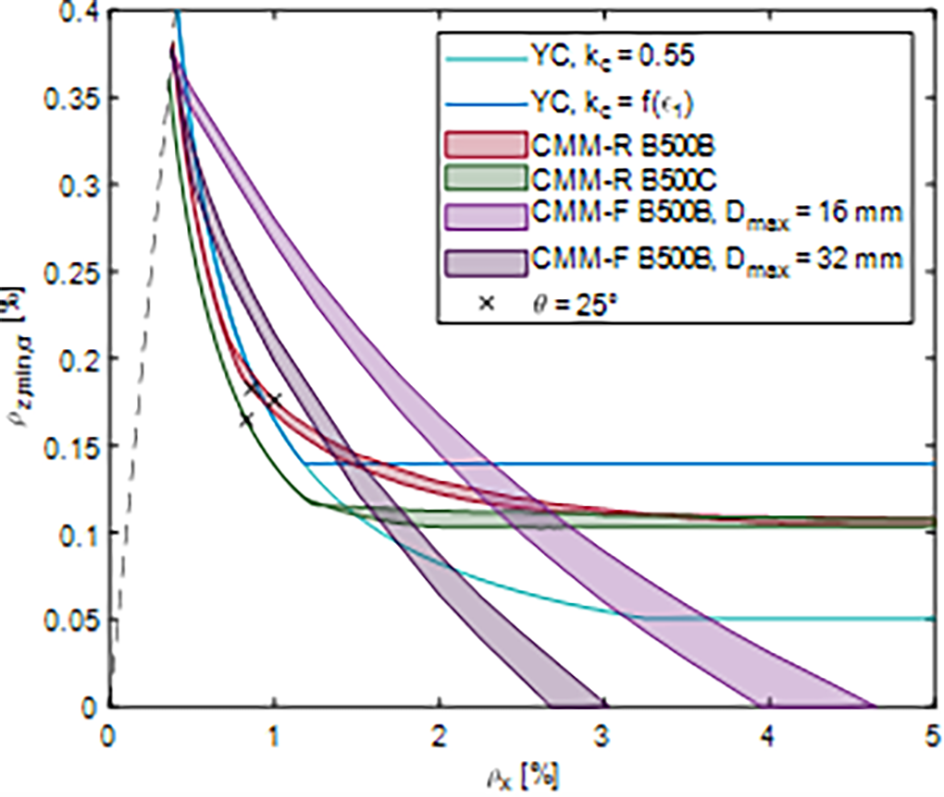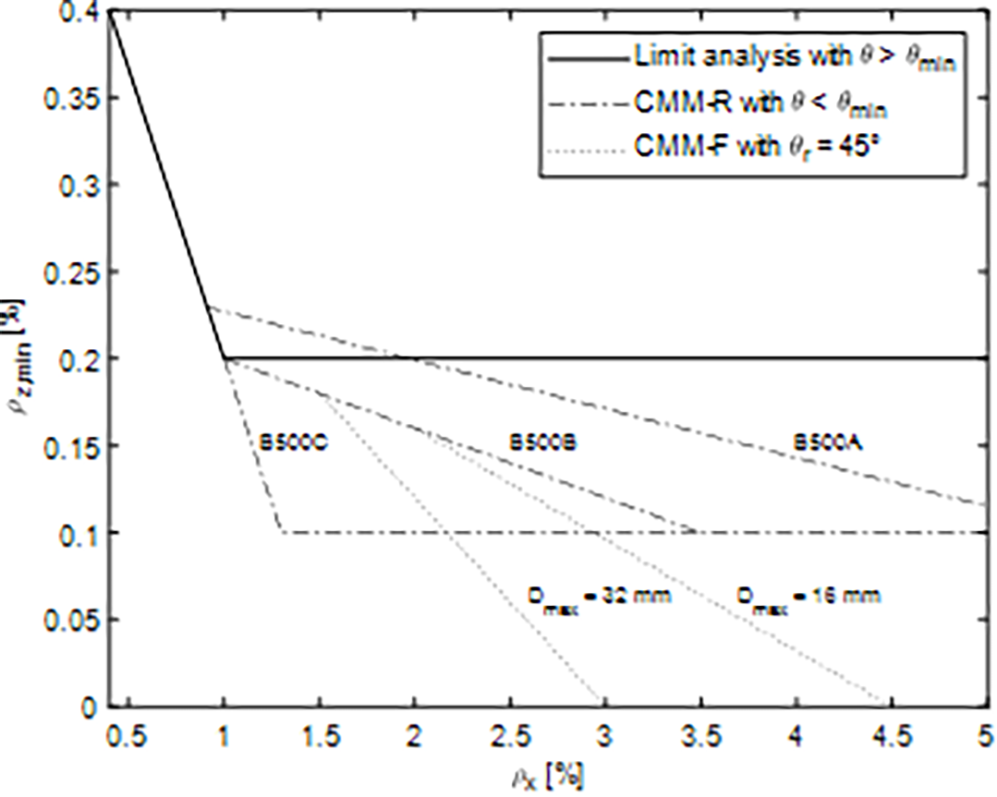Exploring the Limits of Applicability of Shear Models for Structural Concrete
Author: Magnus List
Language: English
Abstract
Almost all current standards define the minimum reinforcement content based only on the concrete strength and the yield strength of the shear reinforcement. This work provides an approach to determine the minimum reinforcement content of reinforced concrete elements depending on the longitudinal reinforcement ratio, the ductility of the reinforcement and the maximum aggregate size of the concrete. For this purpose, three shear models for structural concrete membrane elements and their theoretical foundations are investigated: the Yield Conditions, the Cracked Membrane Model with Rotating cracks (CMM-R) and the Cracked Membrane Model with Fixed cracks (CMM-F).
In principle, the CMM-R is a model that can well describe the behaviour under increasing load up to failure with a flattening of the crack inclinations. However, in the standard, the crack inclination is limited to a minimum value of 25° to ensure ductile failure and to prevent crack sliding. By activating aggregate interlock stresses, an interlocking of the cracks and thus an increase in shear strength can be achieved, for large ρx. This allows angles of less than 25° to be justified with the CMM-R. However, this relies on a more brittle failure, of the aggregate interlock and thus a limitation of the maximum strain of the z-reinforcement. In the area where the CMM-F falls below the CMM-R, the aggregate interlock mechanism is the main load-bearing mechanism, which according to the above logic is associated with the highest risk as a designer. From this logic a design recommendation for the minimum reinforcement based on the models output is provided.
For the CMM, the calculation of the crack spacing according to the tension chord is used. For membrane elements with low reinforcement contents, the following phenomena may occur: (a) the bond stresses are not activated over the entire crack element length at cracking, and (b) the steel yields at the crack at cracking, resulting in increased crack spacing. These phenomena represent inconsistencies in the status quo implementation of the CMM. This work examines the effects in the field of minimum reinforcement, but classifies them as not critical to the results.


